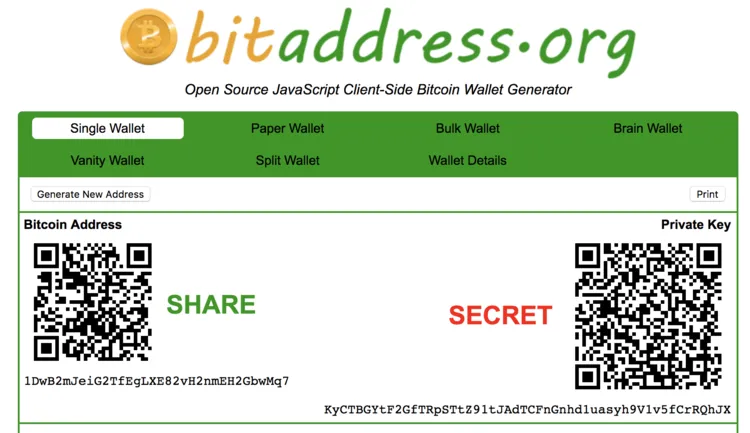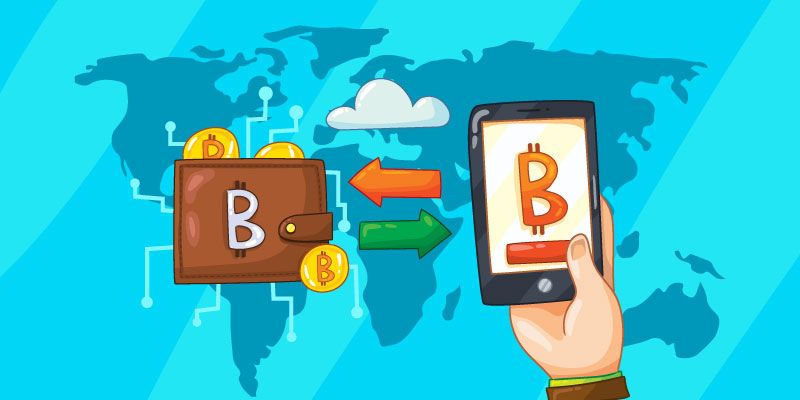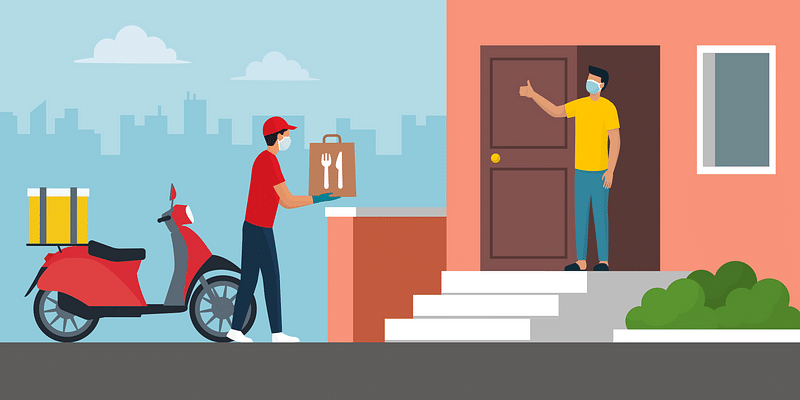Guide to buying cryptocurrency
Cryptocurrencies are still a very risky investment, and my first piece of advice to you is: don't invest what you aren't prepared to lose completely. My second piece of advice, and the reason for this blog is, if you ARE going to invest, learn the processes yourself. So, let's dive in.
In July 2017, I walked into my friend's (who works in the cryptocurrency/blockchain space) office and told him I want to buy cryptocurrency.
“What kind?”, he asked.
“Let’s do some Bitcoin and some Ether. 50/50”, I replied (citing the only two I had heard about to date).
“Do you want to learn how it works?”, he asked.
“Nah…”

I had no idea what I was doing, and it seemed overly complicated and time-consuming to figure out. I just wanted to get into crypto - everyone was talking about it, prices were skyrocketing, and I had a bad case of crypto FOMO. Luckily for me, Bitcoin grew 3 times in the 4 months following my purchase, and bonus: I got a bunch of Bitcoin Cash for free from something confusing called a "fork". That recently blew up too. But I do say "luckily", and the game isn't over yet.
Since then, I have actually taken the time to sit down to learn not only how to buy and sell different cryptocurrencies, but a bit about what they actually are and how they work. After muddling through this somewhat intimidating process, I have decided to share what worked for me in an attempt to de-mystify the most basic logistics of buying and trading cryptocurrencies. Just because I am sharing how to do it though, doesn't mean you should do it.
The basics
To hold the cryptocurrency, you will need a digital account. Every account, be that a wallet or an exchange, has a two very important features: (1) a public key; and (2) a private key.
They keys are a unique pair of alphanumeric characters (also displayed as a QR code) that keep a user’s holdings secure in the digital ecosystem. It looks like this (the paper wallet shown here is empty and was created for the sake of this explanation).

The public key is like your bank account number. You can share it with anyone and they can send you the money. It's what you use to receive deposits to your cryptocurrency account (e.g. wallet or exchange). You may encounter an alternative term such as [Bitcoin / Ethereum] Address -- this is simply a hash of your public key.
The private key is used to withdraw money from your account. It is mathematically linked to your public key and is what authenticates a transaction. It's always used in the background to execute all transaction but you never need to use it explicitly. The only instance in which I have had to use it manually was when I needed to withdraw money from a paper wallet. It can be done by either typing or scanning the private key. Keep private key extra secure. Don't save photos of it, email it to yourself or text it. Read more about it here.

Getting Started
- GET A WALLET
A wallet is where you should store your cryptocurrency. Here are the common options:
- Paper wallet. Literally, you print your public and private keys on a piece of paper. Put it in a safety deposit box and don’t take photos of it. Treat it like cash. I've used BitAddressto generate a paper wallet for Bitcoin (it's really fun to wave the mouse around to hit 100%). It's advised to turn off your Internet connection before generating and printing your wallet.
- Hardware wallet.Basically, a super fancy removable drive. It’s expensive, but considered the most secure way to store cryptocurrencies. If you are paranoid or are storing large amounts of cryptocurrency, consider it. Never used one but I hear Trezor is good.
- Digital wallet. Very convenient, and basically a program that runs as a desktop application or mobile phone app. Some digital wallets are online and accessed through a web address. I use Jaxx, MyEtherWallet, BTC.com. Jaxx is my favourite as it’s easy to use and mobile-friendly. BTC.com is good as it’s the only one that supports Bitcoin Cash.
- EXCHANGES
Exchanges are where you actually buy and sell cryptocurrency. It’s recommended to keep cryptocurrency in your wallet and only transfer cryptocurrency to the exchange when you want to trade, buy, or sell, as there is a history of exchanges being hacked.
For Canadians such as myself, I can recommend Quadriga. I use them and I have had no problems with them (yet). Initially, you will need to fund your exchange account with fiat currency (dollars) to use to buy your cryptocurrency. There are a number of options for how to do this. I just did a basic wire transfer to Quadriga. It takes a bit of time to fund your exchange account with fiat currency, but that is to be expected. To take fiat currency out of Quadriga, I use a Direct Deposit method which you can set up in your exchange account.
Quadriga is the best exchange for Canadians, in my opinion, if all you want to do is trade major currencies (Quadriga only supports Bitcoin, Ether, and Litecoin). When creating an account you would need to get verified and it will take a few days.
Other exchanges support many more cryptocurrencies, however can be plagued with problems. Kraken, for example, keeps having problems and I know people who can’t get money out. Coinbase has a ton of red tape, at least in Canada.
How to send crypto between an exchange and a wallet?
First off, let me just say that actually buying or selling cryptocurrency on an exchange is super easy. Just specify how much you want to buy / sell and at what price (by default you will be recommended a market price).

Now that you have funded your exchange with fiat currency, and used it to purchase cryptocurrency, let’s transfer your newly purchased cryptocurrency from the exchange to your wallet. Remember, it's not advised to leave your cryptocurrency sitting on the exchange! The mechanics are the same with any exchange or wallet. In either direction. Once you know one, you know them all.
On Quadriga, go to Withdraw under the cryptocurrency you want to send to the wallet. With Ether, you will see this:

Open Jaxx and select your Ethereum wallet and hit Send. You will be given an option to either type in the address that you want to send the Ether to (see it highlighted above), or to scan a QR code. You can quickly scan that code with your mobile device and send Ether to Quadriga or type in the address.
IMPORTANT:
- ALWAYS send a small amount first to make sure the transaction goes through and you didn't make a mistake. Only after the trial has been successful should you send a large amount.
- It's highly recommended to have a two-factor authentication on both your wallet and exchange for any funding/withdraw functions (as well as for login).
- It takes time for any transaction to complete because every transaction needs to be confirmed several times (four for Bitcoin and 12 for Ether, at least on Quadriga) by the network. Read on why it's needed here. No need to freak out if it takes even up to an hour to get several confirmations. Consider paying a higher fee (called Gas) to make transaction confirmations faster. You can read more here and here.
- At any time you can check the status of your transactions by going to BlockExplorer for Bitcoin or Etherscan for Ether. Just paste your public key from your wallet or exchange to see the status.
Exchanging Crypto
A helpful and easy service is Shapeshift.io. which allows you to quickly convert one cryptocurrency into another. Suppose you want to exchange Bitcoin into Ether. Type Ether public key that the cryptocurrency will be deposited to after conversion. Type Bitcoin public key in case transaction fails and they need to refund you.

You will be provided a temporary address to send Bitcoin to:

Getting Bitcoin Cash from Paper Wallet
If you were holding Bitcoin before the fork on August 1, 2017, then you automatically got a lot richer as you were granted an equal amount of Bitcoin Cash (another cryptocurrency). Although it took me about 4 hours to figure out, surprisingly, it’s actually very simple to redeem your Bitcoin Cash from my paper wallet.
Your Bitcoin Cash is stored on the same private key as your Bitcoin. Create a BTC.com account. Go to Settings and select "Import External Wallet". Select "Simple Private Key" and type your Bitcoin address.

Hit Next to import your Bitcoin Cash into BTC.com wallet. Now you can send Bitcoin Cash it to Shapeshift to exchange to anything else. Simple.
(Unfortunately, I only dealt with paper wallet so if you have Bitcoin Cash sitting in any other wallet you will need to do your own research. Sorry!)
IMPORTANT: ALL INVESTMENTS CARRY RISKS - THIS IS NO LESS TRUE OF CRYPTOCURRENCIES. THE MARKETS ARE EXTREMELY VOLATILE AND THERE IS MINIMAL (IF ANY) REGULATORY OVERSIGHT. MOREOVER, THE FLEDGELING ENABLING AND SUPPORTING TECHNOLOGIES REMAIN LARGELY UNTESTED AT SCALE. THIS ARTICLE IS WRITTEN FOR EDUCATIONAL PURPOSES ONLY AND SHOULD NOT BE CONSTRUED AS FINANCIAL ADVICE. PROCEED WITH CAUTION!
Post scriptum
Please read my disclaimer again :)
Let me know if you have questions or comments.
Good luck!
(Disclaimer: The views and opinions expressed in this article are those of the author and do not necessarily reflect the views of YourStory.)











